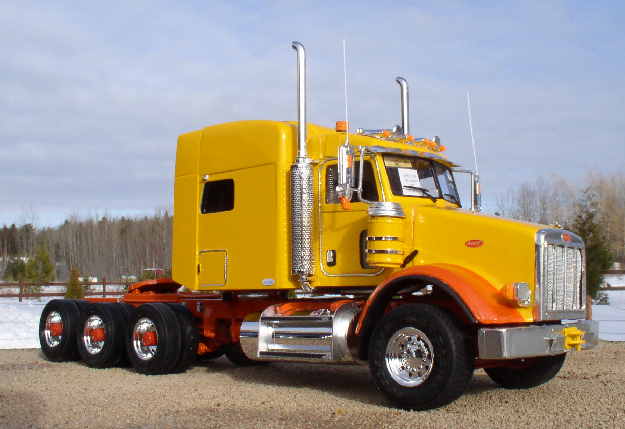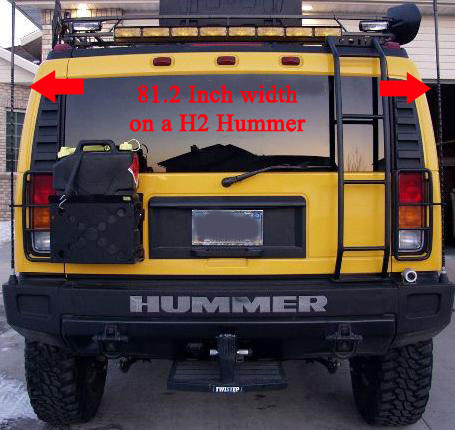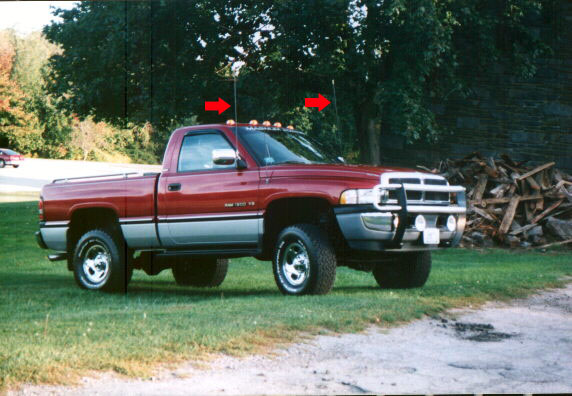Dual antennas – looks aren’t everything

I’ve recently seen a lot of people asking about installing dual antennas on their vehicles. The misconception for many is that two antennas is better than one. In fact I had one person tell me that they will soon be removing their 102″ stainless steel whip and installing dual 3 foot antennas instead so that they can “hear” better. There is a lot of mis-information floating around out there about dual antennas and their purpose or performance. The place you normally see dual antennas is on the big rigs. The antennas are normally mounted on the mirrors on either side of the truck. The reason large trucks use this configuration is because the size and shape of the cab and/or trailer would block the signal of one antenna mounted on one side of the truck. If for example they only had one antenna on the drivers side of the truck, much of their signal would not radiate out from the passenger side of the vehicle reducing their signal in that direction. The dual antennas create an effective way for large trucks to radiate a signal on both sides of their vehicle. This type of configuration also creates a front-to-back type of radiating pattern so that signal is emphasized to the front and the back of the truck which in the case of a trucker traveling down a long highway is a good thing. To achieve the best radiating pattern dual antennas should be placed a 1/2 wave apart when installing. This is roughly 204 inches apart. The average width of a tractor/trailer is 102″ which doesn’t come close to meeting the proper spacing but because of their specific problems a dual antenna setup can be effective. Dual antennas for most vehicles is not a practical venture as you can not place them far enough apart to maximize the dual antenna gain or radiating effect. An example would be the vehicle shown below where the dual antennas are mounted only 81 inches from each other. (As a side note, look carefully at this install. A number of things were done that would create problematic signal radiation. The antennas are not above the height of the vehicle. They are mounted close to the vehicle body which would cause unwanted signal reflection, and they are mounted on the very back of the vehicle making the vehicles signal very directional)
Now just because your truck isn’t wide enough doesn’t mean that dual antennas won’t work. A dual antenna setup can work just fine for most people, BUT the most common problem is that people opt to run a dual antenna setup with small antennas on each side to compliment the vehicle’s looks and not the CB radio performance. Later they complain that their signal only goes a mile or two and they don’t realize that they have severely limited their ability to transmit by installing short fiberglass whips. Below is an example of a Dodge ram with dual antennas mounted off of the mirrors. In this install it appears the owner has used a 3 foot antenna on each side of the vehicle. I’m sure that this setup works, but a Wilson 1000 magnetic mount antenna on top of the cab – or even a 102″ whip placed somewhere on the rear of the truck will most likely give better receive and transmit performance.
The truck above is actually not that bad of a scenario. Recently I have seen trucks with small 2 foot antennas mounted on either side of the vehicle which would be extremely difficult to tune for a good SWR and would not offer much in the way of performance. In most cases people who put dual antennas on their trucks or 4×4’s do so because they like the “look” of the dual antennas. Often people with dual antennas do not even have a CB radio inside their truck. While there is nothing wrong with this, from a CB’er point of view you wouldn’t get much respect. Some people want to have the dual antenna “look” without the problems of tuning and running a dual antenna system. In this case it’s very easy to make one antenna a “real” antenna and not run any coax to the other one. For those of you who do decide to run dual antennas you will need to make sure you use 75 ohm coaxial cable. Most CB shops sell dual antenna coaxial setups that are pre-cut and attached so all you need to do is hook it up. DON’T RIP OFF YOUR OTHER ANTENNA JUST YET Before everyone takes this article as a negative blow to the dual antenna system – it’s good to remember that dual antennas can offer some gain in receive and transmit especially when using high quality antennas. If you run dual 102″ stainless steel whips on your vehicle you will most likely experience some amount of receive gain over running just one. The downside is that dual antenna setups can be extremely DIRECTIONAL. A large amount of gain in one direction is great if everyone you are talking to is located in that same direction, but when driving a vehicle this just doesn’t happen. Stations are located all around you and therefore the best type of antenna system for the majority of CB’ers is the one that provides the best receive and transmit in all directions which is a single antenna placed as high as possible on the vehicle. The longer the antenna the better. A single 102″ antenna will provide better performance than two 3′ antennas. This is something important to remember. If you do decide to run dual antennas I would suggest that each antenna be at least 4′ or longer. I have run a dual antenna system in the past and found it to be very directional. Over the years the best performance I’ve seen was when I placed a full size antenna directly on top of the vehicle. So the next time you run into someone installing dual antennas on their vehicle you may want to ask them what their final goal is? A balanced look for their vehicle; or balanced operation for their CB radio. |


